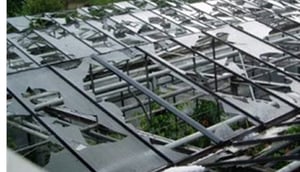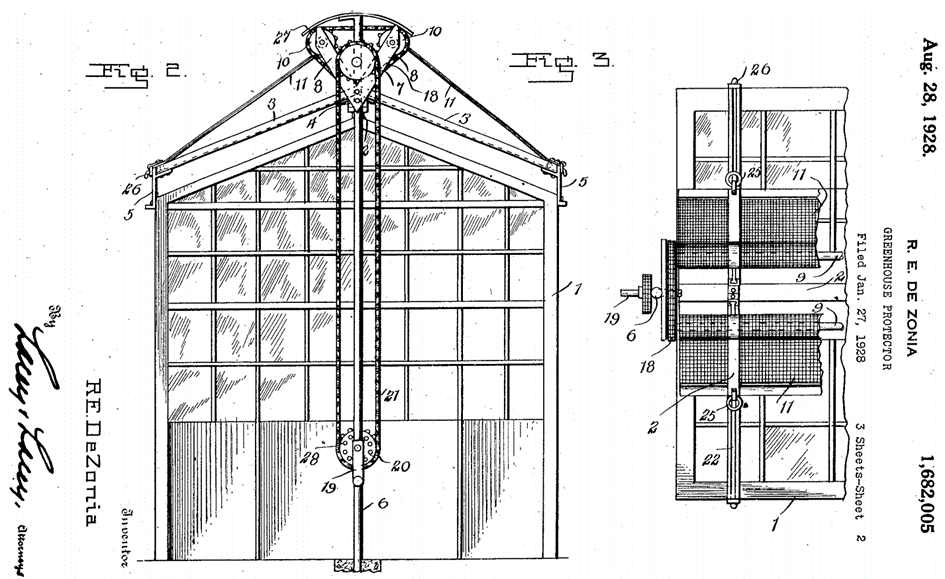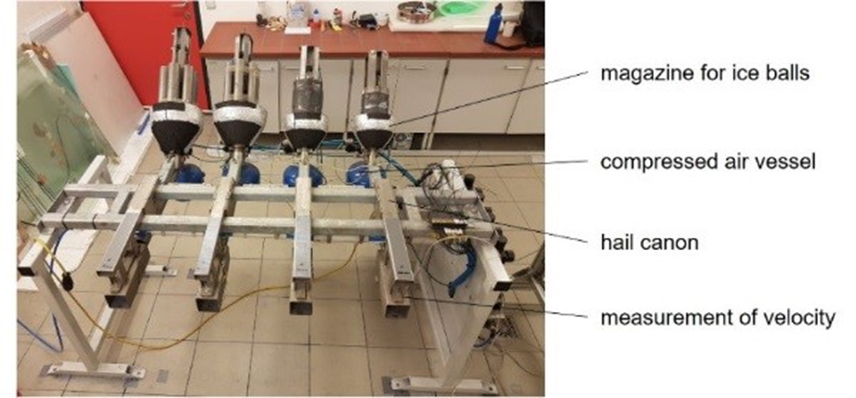Historic horticultural patents: Protecting against hail

Doesn't it make you want to cry when you look at what has happened to the greenhouse in this picture? It has been shattered and the crops have been destroyed as a result of a hailstorm. To me, hailstorms must be one of every horticulturalist’s worst nightmare. Weather is timeless and storms are going to become more and more extreme in our country too. It's a good time to take a look at an old horticultural patent.
All-destroying hailstorm
On 19 June 1925 one of the worst hailstorms ever passed over the small town of Lafayette in Louisiana. It lasted about 20 minutes and some of the hailstones were the size of basketballs! Virtually every single house was damaged but it was a horticulturist who suffered the worst damage. His greenhouse was completely destroyed and all the flowers and plants in it were battered. Insurance only reimbursed part of the damage. The fact that in several parts of town the hailstones went straight through the roofs and the plaster ceilings before finally clattering on the floor gives you an idea of just how powerful the storm was.
The 'Greenhouse Protector'
A few years later, Robert De Zonia came up with a solution to stop the same thing from happening again. See US-1.682.005. He developed a support structure that could be placed on top of a greenhouse roof ridge (2) in an elevated position from which wire screen sheets could be rolled out. It had track rails (3) through which guide wheels (23) could be pulled down at an angle. The wheels (23) were located at the ends of flexible metal straps (12), which in turn were attached to the rolled up wire screen sheets (11). The drive system included a sprocket (10), a chain (21), and a crank (19). Thus in the event of a hail threat the wire screen sheets could be rolled out quickly and easily to intercept the hailstones. The clearance between the wire screen sheets and the greenhouse was such that ventilation windows could be left in an open position.

More extreme weather makes the patent topical again
Just under 100 years later the problem of hail damage is topical again. Climate change has increased the likelihood that we are going to have more frequent severe hailstorms here too. This means that it is not a bad idea to start looking for innovative solutions aimed at preventing hail damage. Today's greenhouses are many times bigger and the damage could also be many times greater. A greenhouse will soon have tens of thousands of windows. Thicker or reinforced glass, or tougher plastic are not an effective solution as they let less light through. And one percent less light can easily reduce production by one percent. Toughened laminated glass with plastic interlayers can be more than twice as expensive as regular greenhouse glass. Development continues at a steady pace and someone has even already developed a hail cannon that can be used to extensively test new innovative glass types.

Future protection
Back to Robert de Zonia's innovation. His invention of a heavy screen made of wire screen sheets is not something we will be using in 2023. However, it does show that even then fighting the weather was a challenge for horticulturists and that the quest for protection continues to evolve. I am looking forward to seeing what people are going to come up with next!

About the author
Since joining EP&C in 1994, I’ve enjoyed working with passionate inventors across a broad range of technologies. My background in mechanical engineering equips me to analyze innovations down to their...
More about Rudi >